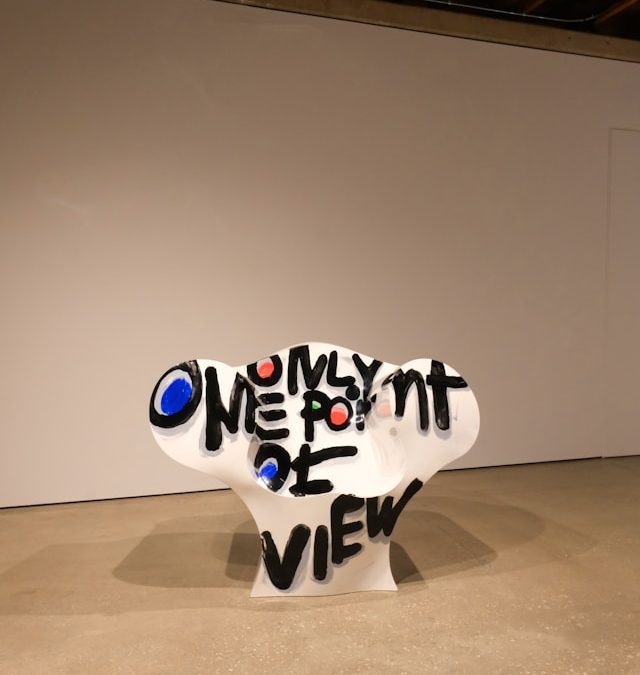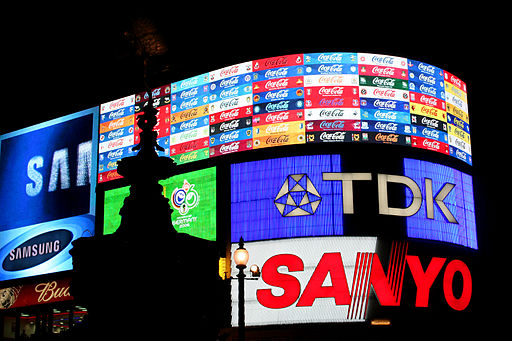Daniel Palmer, Monash University
I once asked a group of my students if they knew what the term postmodernism meant: one replied that it’s when you put everything in quotation marks. It wasn’t such a bad answer, because concepts such as “reality”, “truth” and “humanity” are invariably put under scrutiny by thinkers and “texts” associated with postmodernism.
Postmodernism is often viewed as a culture of quotations.
Take Matt Groening’s The Simpsons (1989–). The very structure of the television show quotes the classic era of the family sitcom. While the misadventures of its cartoon characters ridicule all forms of institutionalised authority – patriarchal, political, religious and so on – it does so by endlessly quoting from other media texts.
This form of hyperconscious “intertextuality” generates a relentlessly ironic or postmodern worldview.
Relationship to modernism
The difficulty of defining postmodernism as a concept stems from its wide usage in a range of cultural and critical movements since the 1970s. Postmodernism describes not only a period but also a set of ideas, and can only be understood in relation to another equally complex term: modernism.
Modernism was a diverse art and cultural movement in the late 19th and early 20th centuries whose common thread was a break with tradition, epitomised by poet Ezra Pound’s 1934 injunction to “make it new!”.
The “post” in postmodern suggests “after”. Postmodernism is best understood as a questioning of the ideas and values associated with a form of modernism that believes in progress and innovation. Modernism insists on a clear divide between art and popular culture.
But like modernism, postmodernism does not designate any one style of art or culture. On the contrary, it is often associated with pluralism and an abandonment of conventional ideas of originality and authorship in favour of a pastiche of “dead” styles.
Postmodern architecture
The shift from modernism to postmodernism is seen most dramatically in the world of architecture, where the term first gained widespread acceptance in the 1970s.
One of the first to use the term, architectural critic Charles Jencks suggested the end of modernism can be traced to an event in St Louis on July 15, 1972 at 3:32pm. At that moment, the derelict Pruitt-Igoe public housing project was demolished.
Built in 1951 and initially celebrated, it became proof of the supposed failure of the whole modernist project.
Jencks argued that while modernist architects were interested in unified meanings, universal truths, technology and structure, postmodernists favoured double coding (irony), vernacular contexts and surfaces. The city of Las Vegas became the ultimate expression of postmodern architecture.
Famous theorists
Theorists associated with postmodernism often used the term to mark a new cultural epoch in the West. For philosopher Jean-François Lyotard, the postmodern condition was defined as “incredulity towards metanarratives”; that is, a loss of faith in science and other emancipatory projects within modernity, such as Marxism.
Marxist literary theorist Fredric Jameson famously argued postmodernism was “the cultural logic of late capitalism” (by which he meant post-industrial, post-Fordist, multi-national consumer capitalism).
In his 1982 essay Postmodernism and Consumer Society, Jameson set out the major tropes of postmodern culture.
These included, to paraphrase: the substitution of pastiche for the satirical impulse of parody; a predilection for nostalgia; and a fixation on the perpetual present.
In Jameson’s pessimistic analysis, the loss of historical temporality and depth associated with postmodernism was akin to the world of the schizophrenic.
Postmodern visual art
In the visual arts, postmodernism is associated with a group of New York artists – including Sherrie Levine, Richard Prince and Cindy Sherman – who were engaged in acts of image appropriation, and have since become known as The Pictures Generation after a 1977 show curated by Douglas Crimp.
By the 1980s postmodernism had become the dominant discourse, associated with “anything goes” pluralism, fragmentation, allusions, allegory and quotations. It represented an end to the avant-garde’s faith in originality and the progress of art.
But the origins of these strategies lay with Dada artist Marcel Duchamp, and the Pop artists of the 1960s in whose work culture had become a raw material. After all, Andy Warhol was the direct progenitor of the kitsch consumerist art of Jeff Koons in the 1980s.
Postmodern cultural identity
Postmodernism can also be a critical project, revealing the cultural constructions we designate as truth and opening up a variety of repressed other histories of modernity. Such as those of women, homosexuals and the colonised.
The modernist canon itself is revealed as patriarchal and racist, dominated by white heterosexual men. As a result, one of the most common themes addressed within postmodernism relates to cultural identity.
American conceptual artist Barbara Kruger’s statement that she is “concerned with who speaks and who is silent: with what is seen and what is not” encapsulates this broad critical project.
The discourse of postmodernism is associated with Australian artists such as Imants Tillers, Anne Zahalka and Tracey Moffatt.
Australia has been theorised by Paul Taylor and Paul Foss, editors of the influential journal Art & Text, as already postmodern, by virtue of its culture of “second-degree” – its uniquely unoriginal, antipodal appropriations of European culture.
If the language of postmodernism waned in the 1990s in favour of postcolonialism, the events of 9/11 in 2001 marked its exhaustion.
While the lessons of postmodernism continue to haunt, the term has become unfashionable, replaced by a combination of others such as globalisation, relational aesthetics and contemporaneity.![]()
Daniel Palmer, Senior Lecturer, Art History & Theory Program, Monash University
This article is republished from The Conversation under a Creative Commons license. Read the original article.
Derrick Jensen – Naturality’ of hierarchy and our culture of violation










